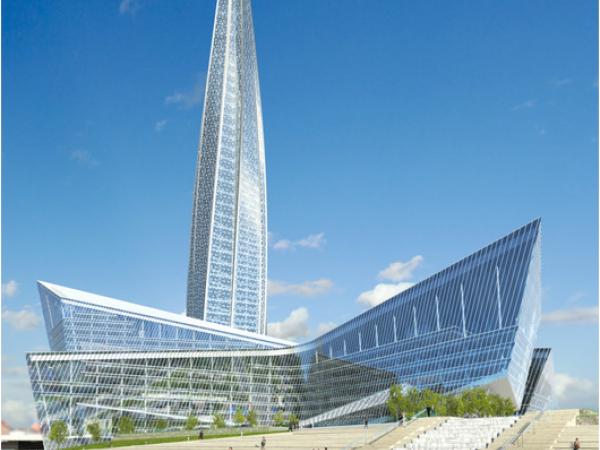Glazing Europe’s Tallest Tower
The Lakhta Center is designed to be a colossal project to construct a contemporary business center in the Primorsky district of Saint Petersburg, Russia.
It will be implemented as a pilot project of an integrated development of the area and the construction of a mini city on the outskirts, therefore creating a sustainable district for life and work.

At 86 floors and 462 m tall, it will be the tallest tower in Europe when completed in 2018. The architects Gorpoekt and RMJM deployed a whopping 44,000 sqm of high-performance glass from Saint-Gobain for glazing Europe’s tallest tower.
The objective of the project is the construction of a cluster in Petersburg that would align with international standards of construction of a business and public environment so as to increase the level of business activity in the city and North-western region as a whole.
The headquarters of Gazprom Neft and Gazprom Group companies will be at the heart of the cluster and will be encompassed by other business enterprises.
The tower will comprise space for offices, public resources, including a sports complex, planetarium, children’s techno-park, medical center, performance hall, cafes, shops, restaurants, and a bank, among others. With the use of energy-efficient glass for skyscrapers, the facility meets its objective of being a sustainable building.
The theme of the tower’s design is that of a lonely spire in a horizontal landscape. An optimal balance was sought to be created between the office and public areas.
Outside the building, the plan for the surrounding area incorporates green, landscaped spaces. An open 2,000-seat amphitheater and green promenade with fountains, paths, and benches have been integrated into the design.
International power agencies report the power consumption in Russia as exceeding the average level in the UN at 40%. By 2020, Russia is to reduce power consumption of the GDP at 40% to comply with the Government’s aim to get closer to the leading European countries in respect of the power efficiency level.
As a large power company, the Gazprom group plans to implement the model of a power efficient district where advanced power saving technologies are originally covered in the design solutions of the buildings, equipment and MEP.
Glazing Europe’s tallest tower included glazing the façade with two skins, formed of double-glazing units incorporating three different glass components.
Saint-Gobain’s COOL-LITE and PLANITHERM were assembled by Glassolutions’ Eckelt Glas site (Austria) for the building’s façades and to provide its occupants with maximum year-round comfort. The SGG COOL-LITE® SKN 076 II glass combines solar control, high light transmission with a neutral appearance.
The solar control, heat reflective glass, SGG COOL-LITE ST Bright Silver offers extreme transparency and an aesthetic, neutral reflection.
The low-e PLANITHERM ONE II glass panes on SGG DIAMANT deliver the market’s best energy-efficiency performance, allowing maximum light penetration and keeping the interiors warm.
Lakhta Center has made a conscious effort to embrace a number of innovative energy-saving technologies in its design, significant among which is the glazing solution from Saint-Gobain.
The intelligent double-glazed façade increases the level of thermal insulation, resulting in a reduction in heating and air-conditioning costs. The airy space between the façade skins will provide both thermal insulation and natural ventilation. In winter, it allows the retention of warmth while in summer, it ensures that the building remains cool.
As skyscrapers continue to scale new heights of glory, so does glass, with its indispensable functional properties and aesthetic appeal. In glazing Europe’s tallest tower, Saint-Gobain reiterates its position as the first choice when it comes to glazing projects that set new benchmarks in the world of architecture.
https://www.glassonweb.com/news/glazing-europes-tallest-tower

